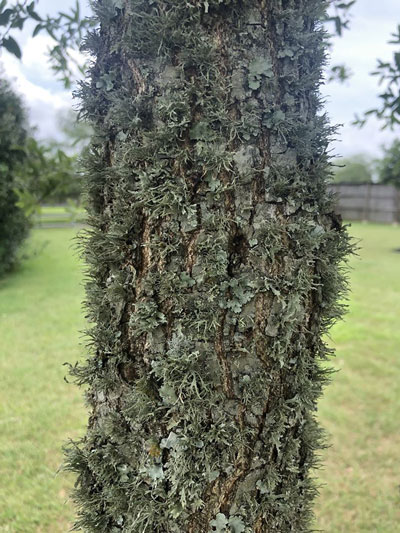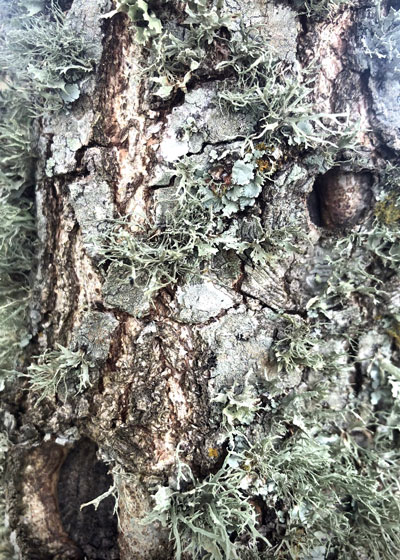Question of the Week – Number Two: July 2, 2020
“What is this growing on the trunks of our young oak trees? Do we need to be concerned? What can we do to stop it?”

These are lichens. They are the textbook example of symbiotic growths. Algae and fungi growing together and nurturing one another. The oak is providing only support. They gain no nutrition or water from the oak tree.
In fact, if you hike in the western mountain ranges you’ll often see boulders covered in lichens. That’s all the proof that I need that they need no nutrients or moisture out of the rocks. They’ve evolved into being able to support one another. (Maybe we can take some life lessons from primitive lichens!)
We live in a forest populated almost exclusively by oaks and pecans. All of our trees have lichens. I’ve spent 43 years watching lichens develop, and hardly a day passes by without my finding several resting on the ground. As a tree trunk grows and expands, the bark that’s been supporting the lichens pops loose and falls and the lichens fall with it.

The only thing that concerns me about Debbie’s photos is the quantity and maturity of the lichens on those trunks. It appears to my eye that the trunks may not be expanding. That means the bark and lichens may not be sloughing. That might mean that the trunks and the trees may not be very vigorous. But I couldn’t tell that from her photos. I did see the couple of dark spots where it appeared small branches might have died or been pruned. I wondered if decay might have set in. That could certainly have accounted for stagnant growth of the trunk.
But, to answer the question directly, lichens on their own do not cause a problem nor do they indicate a problem. That is, until they remain on the bark for much longer than you might normally expect.
